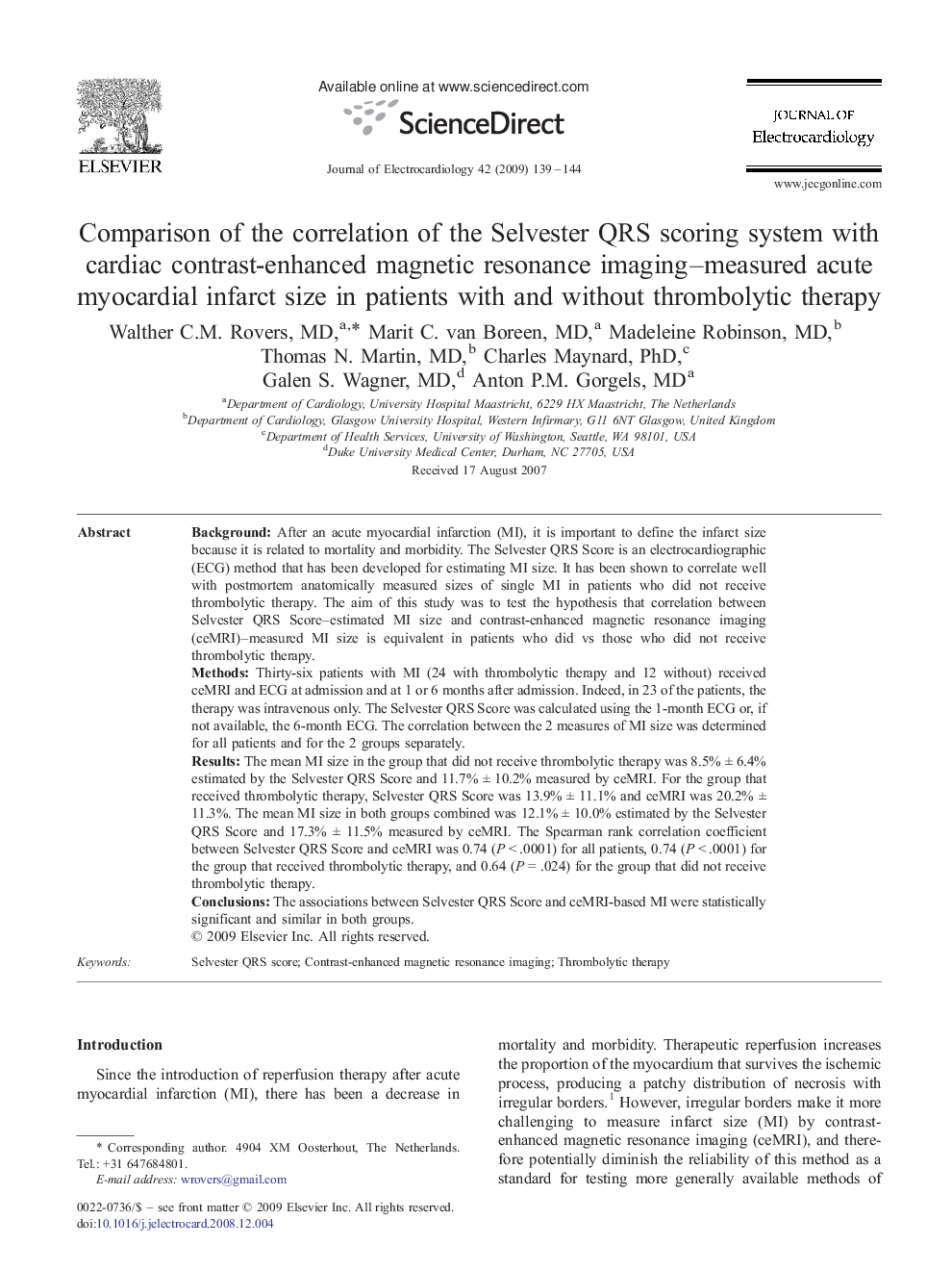| کد مقاله | کد نشریه | سال انتشار | مقاله انگلیسی | نسخه تمام متن |
|---|---|---|---|---|
| 2968656 | 1178882 | 2009 | 6 صفحه PDF | دانلود رایگان |

BackgroundAfter an acute myocardial infarction (MI), it is important to define the infarct size because it is related to mortality and morbidity. The Selvester QRS Score is an electrocardiographic (ECG) method that has been developed for estimating MI size. It has been shown to correlate well with postmortem anatomically measured sizes of single MI in patients who did not receive thrombolytic therapy. The aim of this study was to test the hypothesis that correlation between Selvester QRS Score–estimated MI size and contrast-enhanced magnetic resonance imaging (ceMRI)–measured MI size is equivalent in patients who did vs those who did not receive thrombolytic therapy.MethodsThirty-six patients with MI (24 with thrombolytic therapy and 12 without) received ceMRI and ECG at admission and at 1 or 6 months after admission. Indeed, in 23 of the patients, the therapy was intravenous only. The Selvester QRS Score was calculated using the 1-month ECG or, if not available, the 6-month ECG. The correlation between the 2 measures of MI size was determined for all patients and for the 2 groups separately.ResultsThe mean MI size in the group that did not receive thrombolytic therapy was 8.5% ± 6.4% estimated by the Selvester QRS Score and 11.7% ± 10.2% measured by ceMRI. For the group that received thrombolytic therapy, Selvester QRS Score was 13.9% ± 11.1% and ceMRI was 20.2% ± 11.3%. The mean MI size in both groups combined was 12.1% ± 10.0% estimated by the Selvester QRS Score and 17.3% ± 11.5% measured by ceMRI. The Spearman rank correlation coefficient between Selvester QRS Score and ceMRI was 0.74 (P < .0001) for all patients, 0.74 (P < .0001) for the group that received thrombolytic therapy, and 0.64 (P = .024) for the group that did not receive thrombolytic therapy.ConclusionsThe associations between Selvester QRS Score and ceMRI-based MI were statistically significant and similar in both groups.
Journal: Journal of Electrocardiology - Volume 42, Issue 2, March–April 2009, Pages 139–144